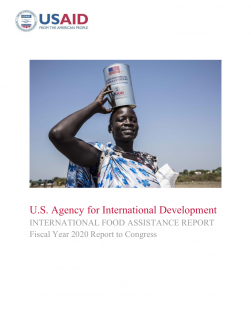In 2020, levels of acute hunger remained high around the globe. An estimated 113 million people across 46 countries were projected to need emergency food assistance, according to the Famine Early Warning Systems Network (FEWS NET). The novel coronavirus SARS-CoV2, also known as COVID-19, and measures to contain it, caused widespread disruptions in both global and local food markets and supply chains—leading to system-wide impacts on food security. USAID has tracked, and continues to track, the impact on food insecurity resulting from the COVID-19 pandemic and has worked with partners to adapt and contextualize existing food assistance programs to fit local needs and improve COVID-19 readiness efforts around the world, in addition to adapting existing programs to respond to increasing needs driven by the pandemic.
Before the pandemic, two factors drove up global food insecurity over the last several years1. The first was the persistence of multiple, large-scale conflicts that disrupted markets and livelihoods and caused widespread displacement and insecurity. The second was the recurrence of climatic shocks or extreme weather patterns. In the Horn of Africa, the effects of conflict were compounded by severe drought in FY 2019 and significant flooding in FY 2020, exacerbating humanitarian needs in Somalia and Ethiopia.
USAID provided food assistance to save lives, reduce suffering, and support recovery for millions in both acute and chronic emergencies. In FY 2020, USAID provided over $1.7 billion in Title II Food for Peace Act assistance, funding the procurement of more than 1.5 million metric tons (MT) of food from the United States to serve a total of almost 28 million2 beneficiaries in 34 countries. More than 83 percent of Title II assistance was for emergency responses and roughly 17 percent was for non-emergency programming. When combined with International Disaster Assistance (IDA) and Development Assistance funds provided as Community Development Funds (CDF), USAID reached more than 71 million people in 57 countries with food assistance in FY 2020, with a total of nearly $4.8 billion.
This report provides the highlights of trends and activities in food assistance for the year, pursuant to Section 407(f) of the Food for Peace Act (7 U.S.C. § 1736a(f)).

